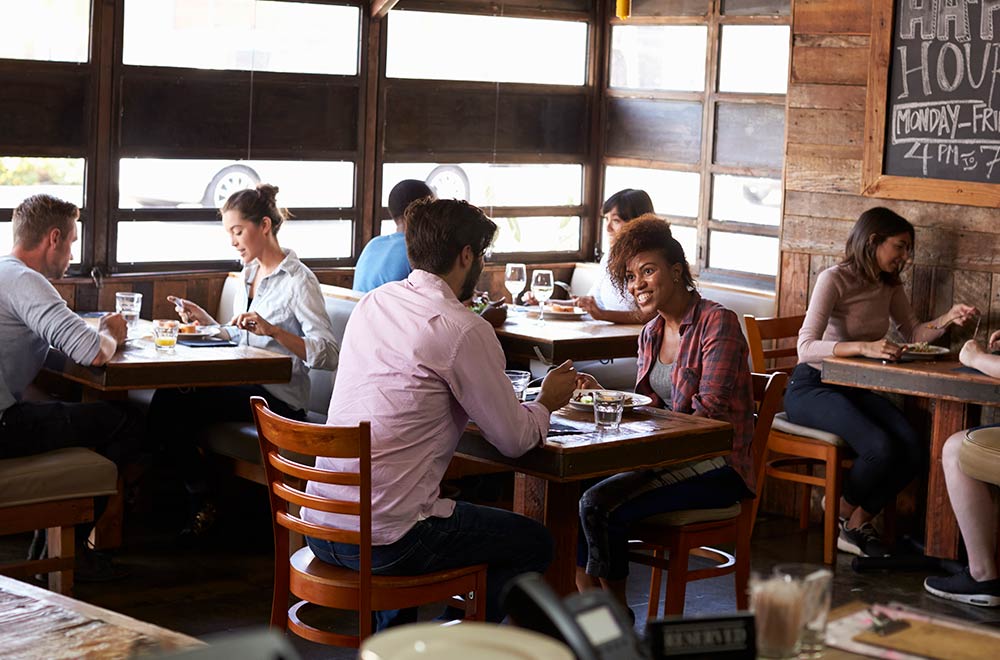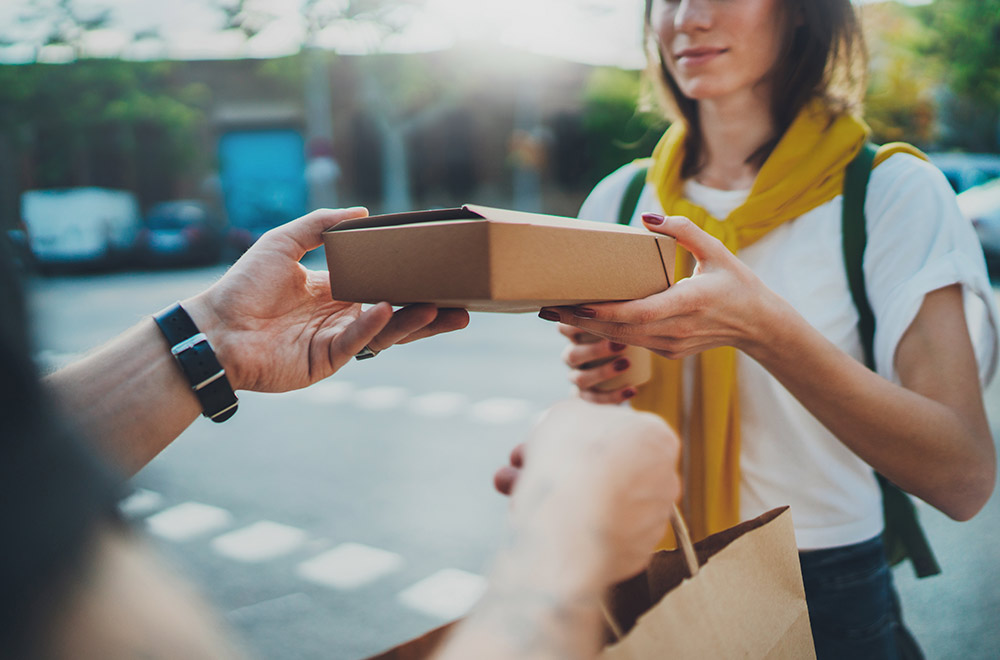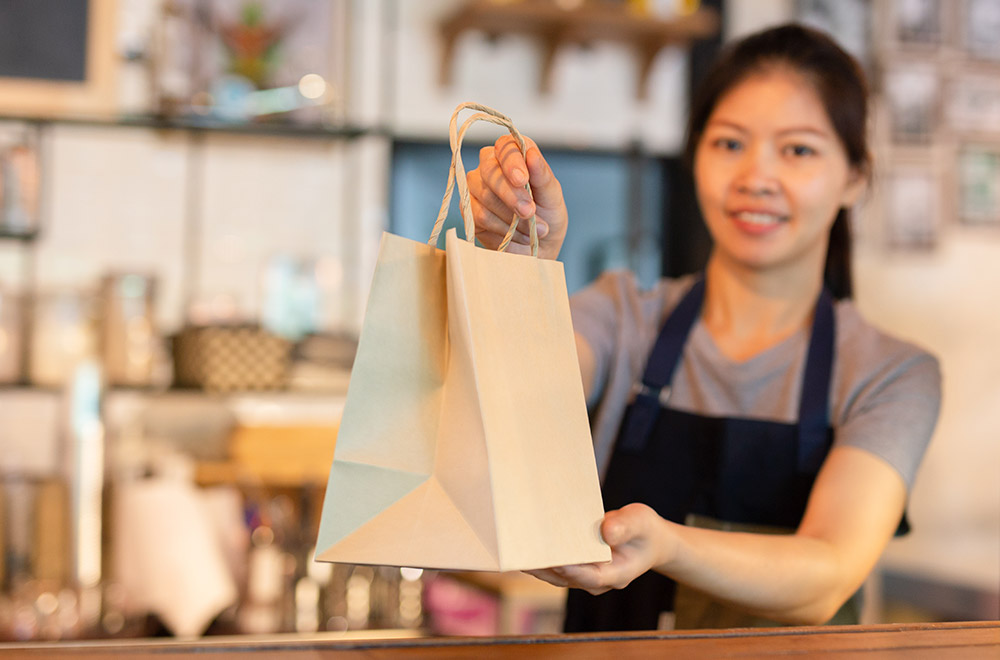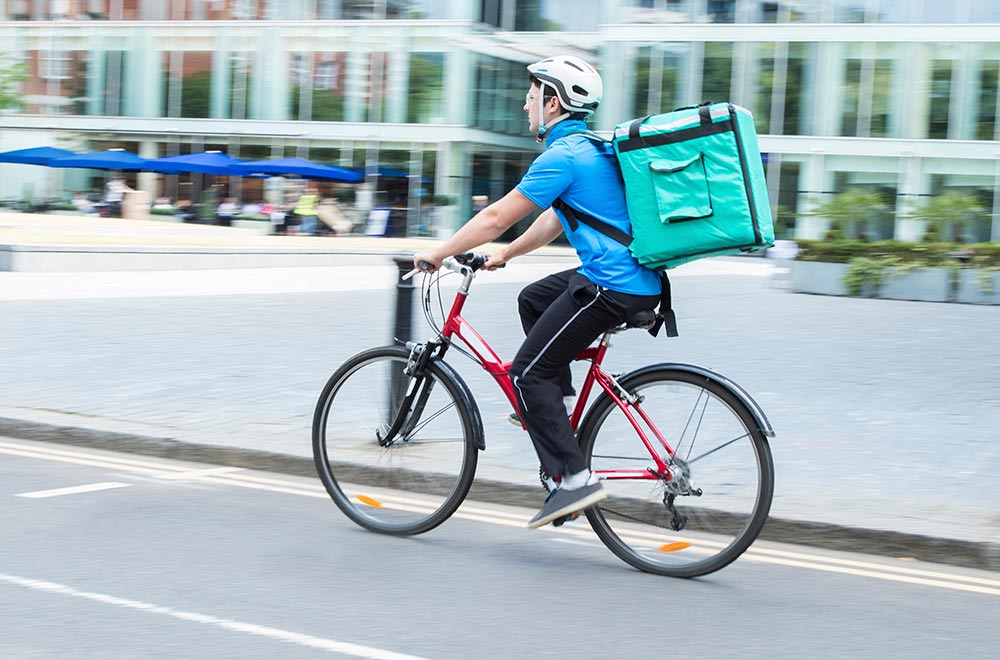Customer tastes are evolving and changing. While some consumers still prefer the full-service experience of dining in a restaurant, a growing number are developing a taste for delivery or takeout. In fact, online ordering spend is growing 300% faster than on-premise spend.
It’s important for restaurant owners to understand how to meet the expectations of each category of diner as well as how different order types might affect their bottom line. Here’s an overview of some of the pros and cons of dine-in, delivery, and takeout orders that restaurant owners should be aware of, particularly when it’s time to work on the budget.

Dine In
On-premise dining sales are the bread and butter of most restaurants, and it’s important for restaurants to ensure that their dine-in business remains a strong income source, even as delivery orders soar.
Dine-in visits tend to account for the most positive guest experiences because the restaurant is able to provide the highest level of service, food, and atmosphere. Unlike delivery or takeout orders, owners and managers are able to address any negative issues that arise during a customer’s meal in real time. Not only that, it’s easier to boost margins through upsells when patrons dine in, especially when it comes to alcohol sales.
Some of the downsides of on-premise dining are the added labor costs of a fully-staffed restaurant, including front- and back-of-house employees. Also, if a guest does have a poor experience, they may be less inclined than a delivery customer to give your restaurant a second chance. That’s because how your staff performs during a guest’s visit is a first impression that you never get a chance to redo.

Delivery
Thanks to the rise of smartphones, consumers are becoming accustomed to getting exactly what they want, when they want it. This is especially true when it comes to ordering food.
The third-party delivery service app business is on the rise and not projected to slow down anytime soon. In fact, 38 million people in the United States are using these apps in 2019, which is a 21 percent increase from the previous year.
At this point, it’s become practically mandatory for restaurants to pay to be featured on one or more of the major third-party dining apps in order to attract and sustain an ongoing base of delivery customers. While some owners may find processing orders from multiple third-party dining apps overwhelming, there are software solutions that can streamline the process by integrating incoming orders into one tablet or POS system.
There are some downsides to the explosion of delivery orders owners should be mindful of, starting with increased costs. While placement on the dining apps will likely give your restaurant more exposure, it also comes at a price, as some of the companies charge up to 30 percent commission fees per order to the restaurant. In addition, if a customer has a poor delivery experience they will probably blame the restaurant even if the transaction was handled by a third-party.
Managing deliveries in-house gives restaurant owners more control over the customer service experience. However, they will also need to contend with expenses such as hiring drivers, purchasing vehicles and/or insurance, and buying insulated food delivery bags.

Takeout
Orders placed for takeout are projected to generate $124 billion in sales. While not as large as the delivery market, it’s still a viable revenue generator for restaurant owners.
Takeout orders are a great avenue to attract new patrons, while still controlling the customer service experience. The labor and cost required to fulfill a takeout order is low when compared to the margins for dine-in and delivery orders, and you get to keep all of the revenue generated from the order since there is no delivery driver or third-party service to pay.
If you offer takeout at your establishment, you’ll want to be mindful about updating your online menu to account for any 86’d or low-inventory items. And while you do control the customer experience, it’s a brief and fleeting interaction. Your ability to upsell is limited and will need to happen quickly, because these guests aren’t likely to linger long at your establishment.
Final Thoughts
It’s important to evaluate your restaurant’s capabilities and goals as it relates to generating and sustaining customer bases in the delivery, dine-in, and takeout arenas. The key is to strike a balance between the three so that your restaurant is never too reliant on one revenue stream, but rather a healthy mix of the three.
Looking to make the leap to working with third-party delivery companies but not sure which ones might be a good fit? Check out our e-tool, “Top Third-Party Food Delivery Services.”






